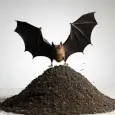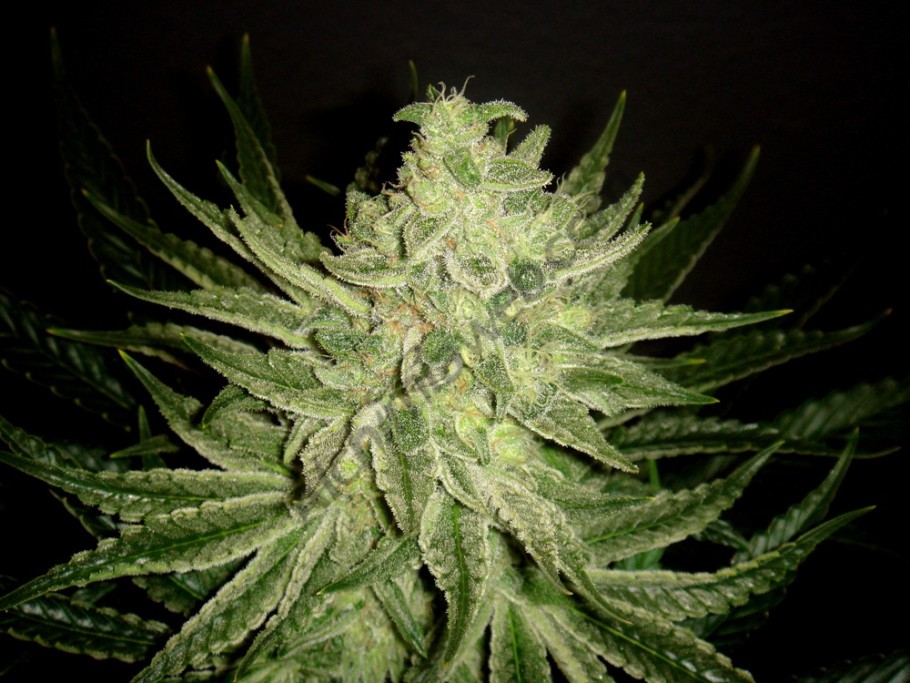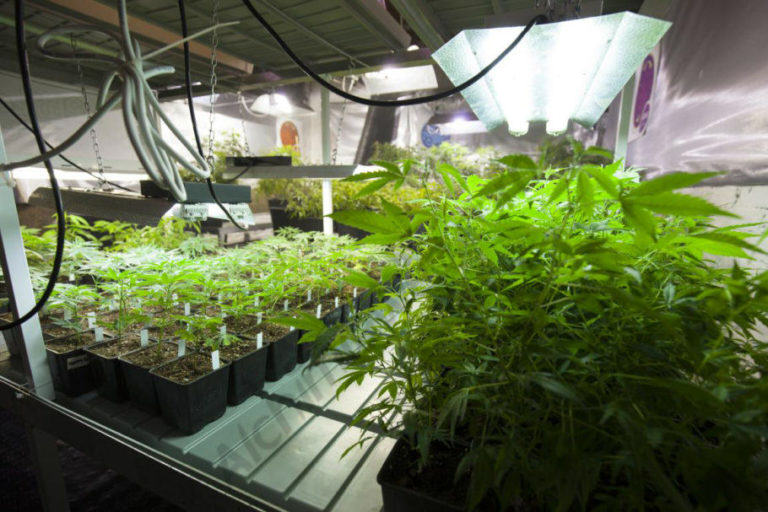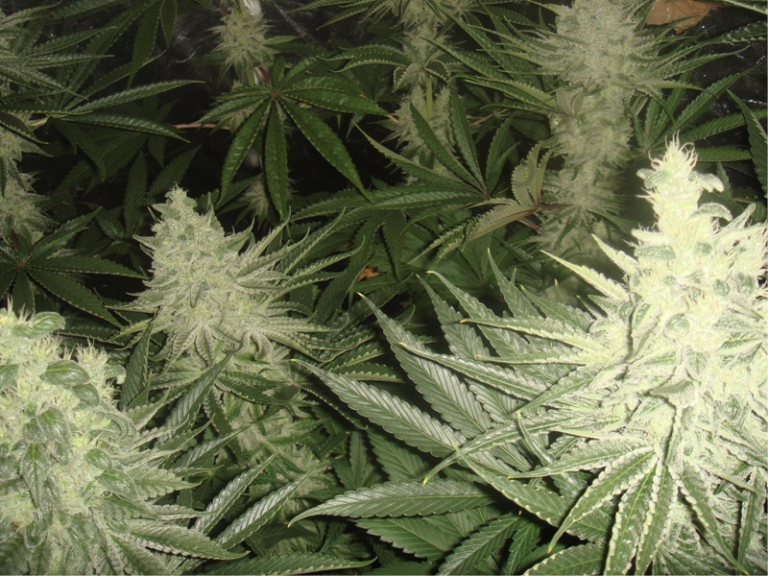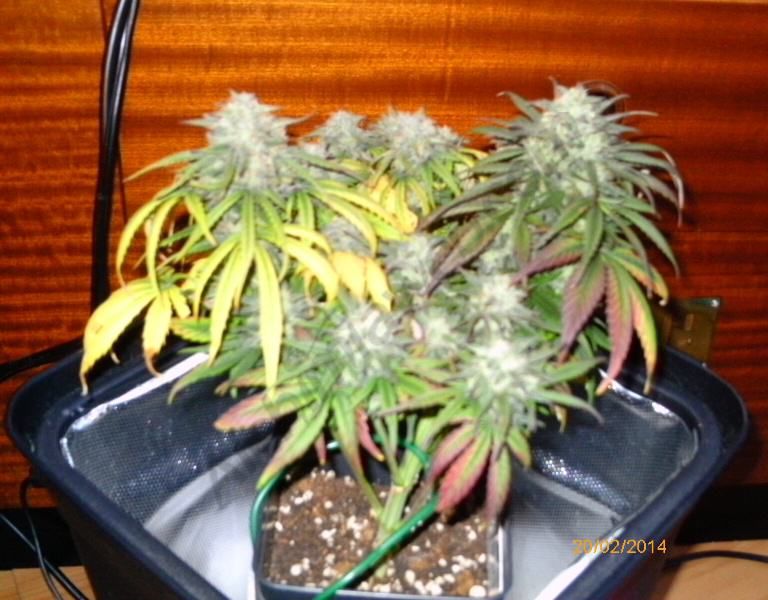Tips to avoid stretching cannabis plants
List of contents
What is the stretch?
Stretching is what we canna-cultivators call the natural vertical growth spurt put on by cannabis plants during the early stages of flowering, and more notable in Sativa varieties and Sativa/Indica hybrids. Most varieties that display this characteristic will finish stretching by the third or fourth week of 12/12 photoperiod and start to fill out the bud sites, while some strains can continue stretching for a considerably longer time.
Stretching is largely looked upon as something to be avoided at all costs when growing cannabis. This is due to the multitude of problems that can be caused by a grow room full of tall and spindly plants, reducing production as plants outgrow the cultivation area and reach up into the lights, shading lower bud sites and causing weak, airy bud growth. In other words, spoiling all our carefully laid plans for keeping an even canopy throughout the flowering period and definitely not maximising the efficiency of our grow space or lamps.

If we haven?t properly planned for the stretch then at this point we?ll have to spend time and energy tying the plants down and rearranging the flowering space to accommodate these lanky beasts in an effort to tease some kind of worthwhile harvest out of them. But could we have done anything to avoid this problem? How can we beat the stretch and keep our plants to a reasonable height during those first crucial weeks of flowering?
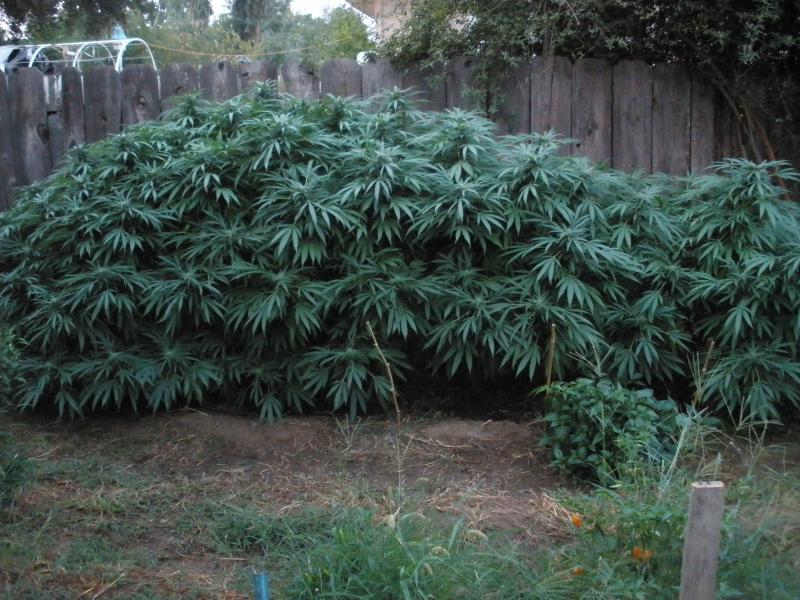
When cultivating outdoors, growers don?t tend to have much of an issue with plants stretching unless they?re trying to keep their garden low in height and away from prying eyes, problems that can easily be avoided by the correct choice of genetics or by practising a little Low Stress Training. Of course, a ridiculously stretchy plant isn?t ideal and can cause some problems like snapped branches or being blown over in high winds, but as a general rule we?re not restricted by ceiling height and for the most part these issues can easily be surmounted with a few canes and some string. Remember though that in humid and cool climates a bit of stretch can actually be helpful: a lengthening of the internode distance means buds will have a more open structure that helps avoid botrytis or other fungal infections, a common problem with hard, solid buds with a structure so tight that once any water gets in there, it can't escape or dry and will result in mould appearring.
Practical steps to avoid stretching
Genetics - the most important choice
This is the first factor to consider, before we begin to grow we should make sure that the plants we intend to cultivate, be it from seeds or clones, are suitable for the available growing space and if we intend to grow several varieties together, they should show roughly the same stretch characteristics to ensure a nice even canopy and maximum efficiency of illumination during flowering. As a general rule, Indica plants won?t stretch much while Sativas and sativa-dominant hybrids will tend to stretch more. There are of course exceptions, for example OG Kush, a mostly Indica cultivar can stretch considerably and need plenty of support, probably due to the influence of the (reputedly) Thai genetics hidden away in this clone-only gem.
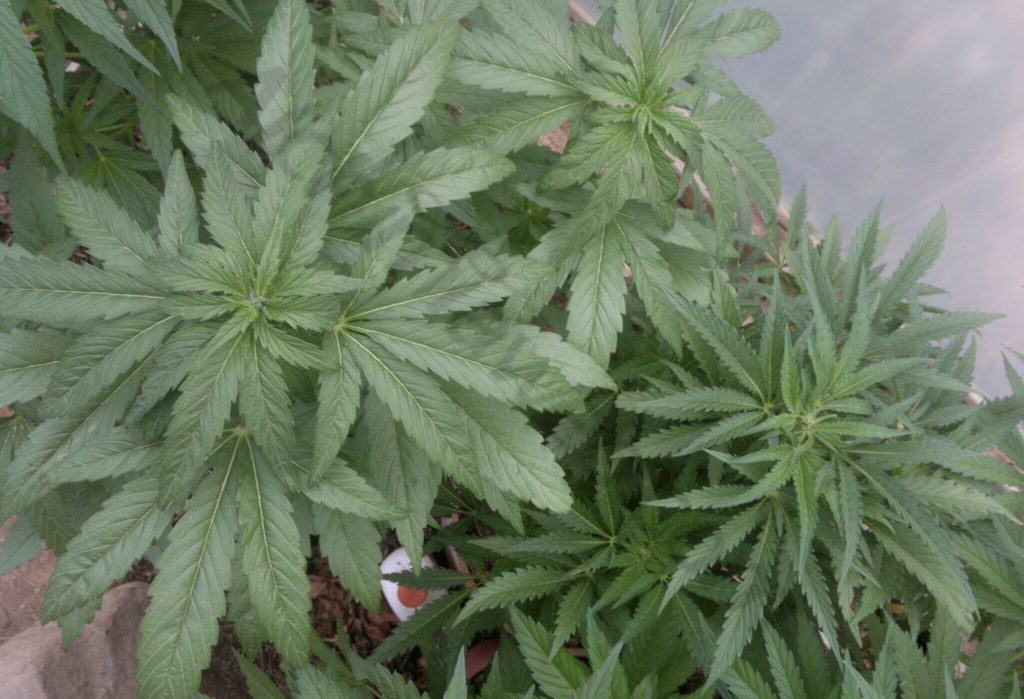
Short veg time
It almost seems too obvious to mention, but a subject that goes hand in hand with our choice of genetics is our decision when to make the change from the 18/6 light schedule for vegetative growth to the 12/12 photoperiod needed to induce flowering. If we are aware that the plants we?re growing have a tendency to stretch, it makes sense to give them a shorter veg period, allowing ample headroom in the grow tent for upward expansion, making sure we optimise our cultivation area to the maximum.
Light Spectrum
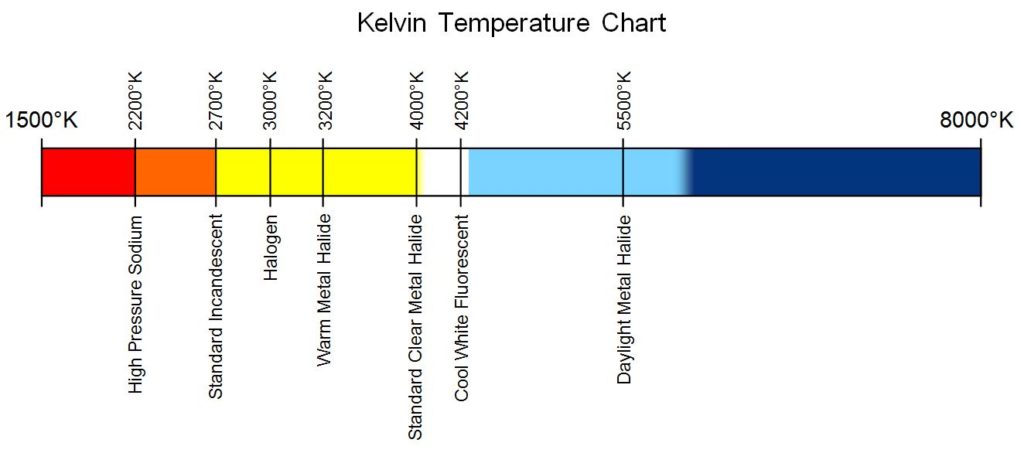
It?s normal practice for growers to use HPS lamps during flowering. These lamps give a warm light spectrum with more red frequencies in it, designed to mimic the natural autumnal light to aid flowering. However, at the same time it is this very same red light spectrum light that induces stretching in ours plants. An easy way to avoid this is to continue using the same Metal Halide lamps we've used during vegetative growth for a few more weeks into flowering, also to use LEC CMH Lighting kits. The blue-ish light spectrum of these lamps will encourage tighter internode spacing and help enormously to reduce stretching and keep plants to a reasonable height. After 2-3 weeks of 12/12 we can change the MH lamp for the HPS and continue flowering as normal. Of course, the same effect can also be achieved using variable spectrum LED lamps.
Temperatures in the grow room
When daytime temperatures within our grow space are much higher than those at night, plants are induced to produce more gibberellin, causing them to stretch considerably. If we can achieve a difference of less than 5ºC between daytime and nighttime temperatures, this problem is reduced greatly. However, by making the night temperature higher than that of the day, we can reduce gibberellin production by half and control the stretch. Indeed, research has shown that most of the stretching takes place during the first few hours of the morning, so simply by reducing temperatures for a couple of hours at daybreak to 5ºC below those at night for the first 3 weeks of flowering, we can almost eliminate the stretch completely. This is a technique known as a ?cold dump? and can be carried out either by venting cool air from outdoors in to the tent or by using an air conditioning unit if the outside temperatures are too high.

Nutrition, CO2 and irrigation
When cannabis plants stretch, they are at the same time consuming large quantities of nutrients, specifically Nitrogen and Phosphorus, along with a great quantity of water. By cutting back on these macronutrients and reducing irrigation for the first few weeks of flowering, we can have a positive influence on reducing plant stretching. If you use supplemental Carbon Dioxide in your grow, then stop this for the same period to enhance the effect and further reduce stretching.
Ventilation
A simple step that can greatly help is to improve ventilation and air movement by using at least one rotary oscillating fan in addition to the extraction fans. This will act to strengthen plants inside the grow room, moving them in the breeze and promoting thicker stems and stockier growth.
Maximise illumination
Plants will naturally grow towards the light and in low light situations they will elongate and stretch to reach the illumination they crave, leading to spindly and lanky plants with weak stems. We can avoid this by making sure of two things, firstly by not overcrowding our plants: it?s always tempting to try and squeeze one or two extra pots into the grow tent to make the most of the space, but too often this is a false economy, and the subsequent poor light intensity and lack of air movement can lead to stretchy plants and other, more serious plant health issues such as mould and pests.
The second step we must take is to ensure our grow lamps are hanging at the correct distance from the tips of the plants, this should be near enough to illuminate the plant fully but far enough away to avoid burning the top of the plant. This distance will vary according to the type of lamp and the wattage of the bulb, so check with the manufacturer if you're unsure.
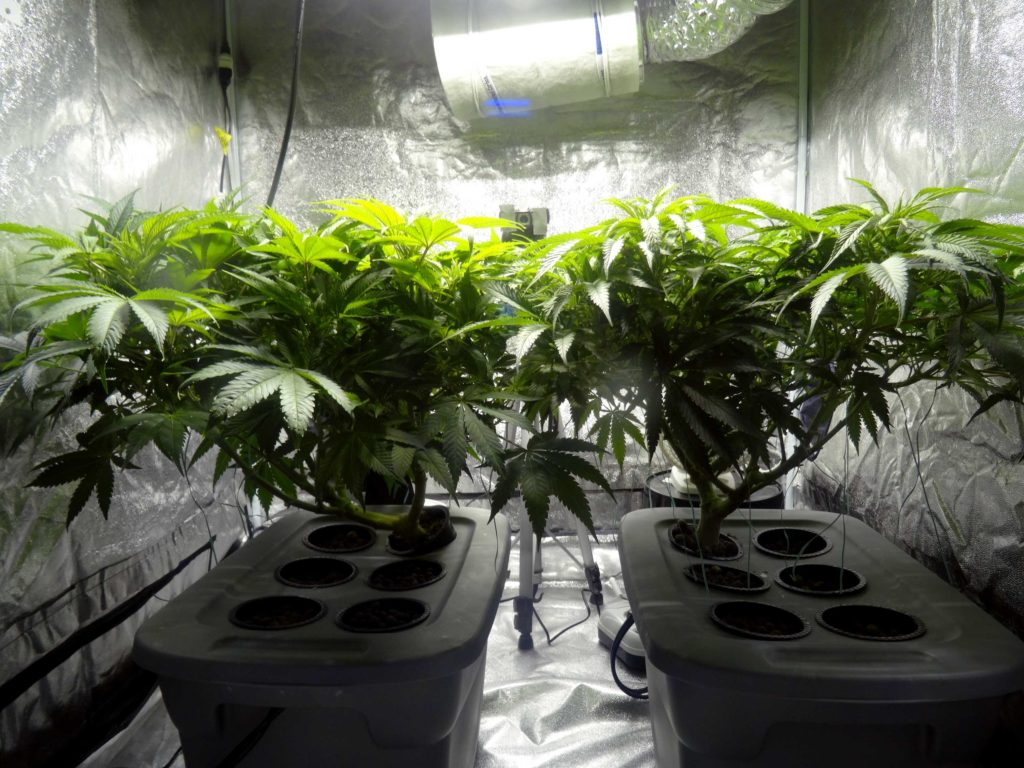
FInalle, the newest CMH LEC grow lights like Nanolux 315w CMH LEC, SunBurst 315W CMH LEC or Lumatek Aurora 315w CMH LEC are delivering best results in terms of gram per watt.
Training and pruning
If we?ve got enough horizontal space in our grow area, any tall and lanky plants can simply be trained to fit the area by tying down the tops or using a trellis net to create a SCROG style cultivation, a great way to minimise plant height and maximise production at the same time. However, what a SCROG saves in vertical headroom it will occupy in horizontal space and if we don't have that much room to train plants, then a more drastic option is to prune the plants back, cutting off the tops to halt vertical growth completely. This approach has its disadvantages though, the shock of pruning will tend to halt plant growth completely for a few days, while the action of removing the top will encourage plants to grow bushier with more side-branching, which depending on our situation may not be desirable.
A few more ideas
Apart from the main points of action outlined above, there are plenty of other useful ideas and theories out there regarding stretching plants, they may not all work in all situations, but we?ll briefly mention a few of the better ones here:
- Stop Grow is a product manufactured by Spanish nutrient company Pro-XL. It's a plant growth regulator that claims to stop vertical growth and induce flowering, not only enabling us to control the final height of the plants, but also reducing flowering time by around a week. According to the manufacturer, this also automatically leads to larger, denser buds and an improved flower formation. As an added bonus, Stop Grow is compatible with CO2 use, for optimum results. Find it here in our catalogue.
- 6-Benzylaminopurine or 6-BAP is a synthetic cytokinin, a growth hormone which is used in agriculture to improve flower set and increase productivity. Some cannabis growers have reported good results from applications of 6-BAP but it has its disadvantages, being difficult to source and complicated to mix and apply as well as being toxic and potentially harmful to human health. When it comes to a product we intend to consume ourselves, we prefer to keep things as natural as possible!
- Restricting roots. As mentioned above, sativa varieties are very prone to stretching and can be a true challenge to grow to full maturity indoors, as they tend to keep growing upwards well into the flowering period. Over the years, experts in growing these more tropical strains have found they can manage the stretch by keeping the plants in smaller pots for the first four weeks of the bloom period, only re-potting to a larger pot once stretching is over.
- 48 hours darkness. Another trick we?ve seen reported for Sativa and Sativa-dominant hybrids is to subject plants to 48 hours of complete dark to help transition before switching to the 12/12 light period for flowering. We haven?t tested this method for ourselves, but there?s not much to lose and we feel it might be worth a try for growers who really want to make sure there?s as little stretch as possible.
Well, we hope this post has been of some help in avoiding problems during flowering. Feel free to comment with your experiences of any particularly stretchy plants and how you?ve dealt with this issue in your grow. Happy growing!
Studies and publications consulted for the writing of this article:
- Thermoperiodic Stem Elongation Involves Transcriptional Regulation of Gibberellin Deactivation in Pea
Jon Anders Stavang, Bente Lindgård, Arild Erntsen, Stein Erik Lid, Roar Moe, and Jorunn E. Olsenhttps, 2005.
















































